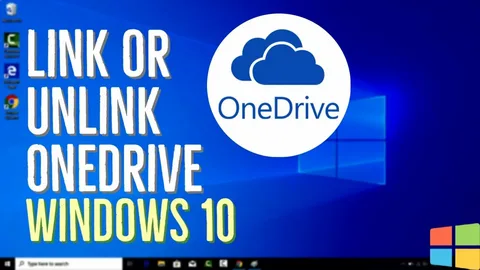Understanding Unlinked Codes: What They Are and Why They Matter
Table of Contents
Introduction
Unlinked codes are a common issue in software development, and they can create hidden problems that affect how well a program works. These are parts of the code that were written but are not connected to the rest of the system. While they don’t immediately break the software, they can cause performance issues, slow down processes, and even make the software harder to maintain in the future. Developers need to keep an eye on unlinked codes to ensure their programs run smoothly.
When unlinked codes pile up over time, they become harder to manage. This can lead to cluttered code that’s difficult to read, understand, or fix. Developers may spend more time trying to figure out what certain codes do instead of focusing on improving the system. Unlinked codes might also cause unexpected errors, which can confuse both developers and users, leading to a negative experience with the software.
In this blog post, we’ll explore what unlinked codes are, how they can affect both developers and users, and the best practices to handle them. By the end of this article, you will have a better understanding of why it’s important to keep your code clean and linked correctly. Let’s dive into the world of unlinked codes and how we can fix and prevent them!

What Are Unlinked Codes?
Unlinked codes are pieces of code that are not properly connected within a system or software. These codes do not function as intended because they are isolated and not linked to the rest of the program. In a well-connected system, every piece of code plays a role in making the software run smoothly. However, when some codes are unlinked, they act like puzzle pieces that don’t fit, causing disruptions in the system.
These unlinked codes can be the result of errors during programming or updates. Sometimes, when developers modify or update software, certain codes are accidentally left out or not linked to the new features. This leaves them floating in the system, unable to perform any meaningful function. It’s like building a bridge but leaving out important sections, making it incomplete and unusable.
Unlinked codes may also exist because they were part of test codes that were not removed after the testing phase. In such cases, these codes were never meant to be linked to the main system but were mistakenly left behind. This can create confusion later on and cause performance issues.
Another reason unlinked codes occur is during upgrades. When a system is updated, some old codes might not be compatible with the new version and are left unlinked. These leftover codes can cause the system to behave unpredictably, leading to errors or slow performance.
To ensure the smooth functioning of any software or system, it’s important to detect and fix unlinked codes. Regular checks and system maintenance help identify these unlinked pieces, ensuring they are either properly linked or removed if no longer needed.
How Unlinked Codes Affect System Performance
Unlinked codes can have a significant impact on system performance. When codes are not connected properly within a system, they can cause the software to slow down or even crash. These unlinked codes act like roadblocks, stopping the smooth flow of operations. Instead of working efficiently, the system spends extra time and resources trying to figure out what to do with these unused or unconnected codes.
In some cases, unlinked codes can lead to system errors. When a program tries to access or use a piece of code that is not linked to the rest of the software, it may not know how to proceed, leading to crashes or freezing. This can frustrate users, as they may have to restart their computers or devices to resolve the issue.
Another way unlinked codes affect performance is by taking up unnecessary space in the system. Even though these codes aren’t doing anything useful, they still occupy memory and resources. This can slow down the overall speed of the software, making it less efficient and harder to run multiple tasks at the same time.
Unlinked codes can also make troubleshooting more difficult for developers. When problems arise, it can be hard to track down the cause because the unlinked codes are like hidden pieces that aren’t easily visible. Developers may have to spend extra time finding and fixing these issues, which can delay software updates or repairs.
In summary, unlinked codes can cause slow performance, system crashes, wasted resources, and complicated troubleshooting. To maintain a smooth and efficient system, it’s crucial to identify and fix unlinked codes regularly. This ensures that the software continues to run as expected, without any hidden issues affecting its performance.

Why Do Unlinked Codes Exist?
Unlinked codes exist for several reasons, many of which are related to human error or changes in software development. One common reason is coding mistakes. When developers write or modify code, they might forget to link certain parts to the main system. These mistakes can happen during long or complex programming processes, where it’s easy to overlook small details.
Another reason unlinked codes exist is due to software updates. When developers upgrade a system, they often add new features or improve existing ones. During this process, some older codes may become outdated or incompatible with the new version. Instead of removing or updating these old codes, they may be left unlinked, no longer contributing to the software’s functionality.
Unlinked codes can also appear when parts of a project are abandoned. Sometimes, developers start working on new features or ideas but later decide to stop or change direction. The unused code from these unfinished projects might remain in the system, unlinked and forgotten. Over time, these leftover pieces can accumulate, creating clutter within the software.
Testing and experimentation are other reasons why unlinked codes exist. During development, programmers often create temporary codes to test specific functions or scenarios. Once the testing is done, these codes should be removed. However, if they are forgotten, they can stay in the system without being linked to the final product.
In summary, unlinked codes exist due to coding mistakes, software updates, abandoned projects, and leftover testing codes. While these unlinked pieces might seem harmless, they can lead to bigger problems if not properly managed. Regular maintenance and code clean-up are essential to avoid performance issues caused by these unlinked codes.
Common Problems Caused by Unlinked Codes
Unlinked codes can lead to a variety of problems within a software system, affecting its overall performance and user experience. One of the most common issues caused by unlinked codes is system crashes. When a program tries to execute a command involving unlinked code, it may not know how to handle the missing connections, causing the software to freeze or shut down unexpectedly. This can be frustrating for users, especially if they lose important data in the process.
Another problem caused by unlinked codes is slow performance. Unlinked codes take up memory and resources, even though they are not performing any useful tasks. This extra load on the system can slow down the software, making it run inefficiently. Users may notice lagging or long loading times, which can negatively impact productivity and overall satisfaction with the system.
Unlinked codes can also create errors that are difficult to trace. Because these codes are not connected to the main program, they can generate unexpected bugs or glitches. These errors may not show up immediately but can surface later, making it hard for developers to find the root cause. Debugging and troubleshooting become more complex when unlinked codes are involved, as they add hidden complications to the system.
In addition to technical problems, unlinked codes can increase maintenance costs. Developers must spend extra time identifying and fixing these unlinked pieces of code, which can delay software updates or enhancements. The longer unlinked codes remain in a system, the more difficult it becomes to clean them up, leading to higher costs and longer development cycles.
In summary, unlinked codes can cause system crashes, slow performance, hidden errors, and increased maintenance efforts. Addressing these issues early on through regular code reviews and clean-ups can help prevent these problems from affecting the overall functionality of the software.

How to Detect Unlinked Codes in a System
Detecting unlinked codes in a system is essential to ensure the software runs smoothly. One effective way to find unlinked codes is through automated code analysis tools. These tools scan the entire codebase and check for any pieces of code that are not linked to the main program. By doing this, they help developers identify unlinked or unused code that may be causing performance issues. Using automated tools can save a lot of time compared to manually checking each line of code.
Code reviews are another method to detect unlinked codes. During the review process, developers carefully examine the code to ensure all parts are connected and working as intended. This practice often uncovers unlinked codes, especially when multiple developers are involved in a project. Regular reviews are important, as they not only help in finding unlinked codes but also improve the overall quality of the software.
Testing and debugging are also helpful in identifying unlinked codes. When developers test the software, they often discover parts of the system that are not working correctly. These issues can sometimes be traced back to unlinked codes. Debugging tools allow developers to track the flow of code execution and pinpoint where the code is not properly connected, making it easier to fix the problem.
In addition to tools and reviews, documentation plays a key role in detecting unlinked codes. By maintaining clear and updated documentation of the software’s structure, developers can easily identify which pieces of code should be linked and where potential issues might arise. Documentation acts as a roadmap for the system, helping to quickly spot any unlinked or redundant code.
In conclusion, automated code analysis tools, regular code reviews, testing, debugging, and proper documentation are effective ways to detect unlinked codes in a system. By using these methods, developers can ensure that all parts of the software are properly connected, improving performance and preventing potential errors.
Fixing Unlinked Codes: A Step-by-Step Guide
Fixing unlinked codes is important to maintain a smooth and efficient software system. The first step in fixing unlinked codes is identifying the unlinked pieces. Using automated code analysis tools or manually reviewing the code can help locate the problematic sections. Once these unlinked codes are found, it’s essential to understand why they are not connected to the rest of the system.
The next step is to analyze the purpose of the unlinked codes. Sometimes, unlinked codes are leftover from old versions or abandoned features, while other times they might be useful but were mistakenly left unlinked. By understanding the purpose, developers can decide whether to link the code to the system or remove it completely. If the code is no longer needed, it’s better to delete it to avoid confusion and free up resources.
If the unlinked code is still useful, the developer can proceed by reconnecting it to the correct part of the system. This step involves linking the unconnected code to other parts of the program where it should function. Careful attention is needed to ensure that the linking is done correctly to avoid introducing new errors. Testing the newly linked code helps confirm that it now works as intended and is properly integrated into the system.
Once the code is fixed and linked, it’s important to run tests on the entire system. Even after linking the code, there might be unforeseen issues that affect the overall performance. Running tests helps ensure the system runs smoothly without any new errors caused by the fix. Developers should also review the code to make sure everything is in place and working efficiently.
In conclusion, fixing unlinked codes requires identifying the problem, analyzing the code’s purpose, reconnecting useful codes, and running thorough tests. This step-by-step approach ensures that the system remains clean, efficient, and free of unlinked or unnecessary code. Regular maintenance and reviews can prevent unlinked codes from causing further issues in the future.

The Importance of Linking Codes Correctly
Linking codes correctly is essential for ensuring that software systems run smoothly and efficiently. When codes are properly connected, they allow the different parts of a program to work together seamlessly. This means that each function, feature, or command can communicate with the others, resulting in a system that operates as expected. Without proper linking, the software may encounter issues like crashes, slow performance, or unexpected behavior.
One key reason for linking codes correctly is to avoid errors and bugs. Unlinked or improperly linked codes can lead to gaps in the system where certain features don’t work, causing the program to fail or perform poorly. By making sure every piece of code is connected in the right way, developers can minimize the chances of errors and ensure the software functions as intended. This also makes it easier to troubleshoot and fix problems when they arise.
Improved system performance is another benefit of correctly linked codes. When all the parts of a program are properly linked, the system can process commands more quickly and efficiently. This reduces lag and speeds up the program, providing a better user experience. On the other hand, unlinked codes can slow down the system by taking up unnecessary memory and resources, causing delays in processing.
Additionally, linking codes correctly makes the software easier to maintain and update. When codes are well-organized and linked, it’s easier for developers to understand how the system works. This makes future updates, bug fixes, or adding new features much simpler. Developers can work more efficiently without having to spend extra time figuring out how the different pieces of code are connected.
In conclusion, linking codes correctly is crucial for ensuring the smooth operation of software, preventing errors, improving performance, and simplifying maintenance. Developers should prioritize proper code linking to create reliable and efficient systems that function without unnecessary issues or delays. Regular reviews and clean-ups can help ensure that all parts of the software remain properly linked and working as intended.
Preventing Unlinked Codes in Future Projects
Preventing unlinked codes in future projects starts with planning and organization. When developers begin a new project, they should map out the structure and flow of the software carefully. A clear blueprint ensures that all parts of the code are connected in a logical and organized way from the start. By setting up a solid framework, developers can avoid the issue of unlinked or disconnected codes that might cause problems later in the development process.
Another important step is to use version control systems. Tools like Git help developers track changes in the code and ensure that new additions or modifications are properly linked to the existing codebase. Version control systems make it easy to identify and fix any mistakes or unlinked codes quickly, as every change is recorded and can be reviewed. This allows for smooth collaboration among developers and minimizes the risk of missing connections between parts of the code.
Regular code reviews and team collaboration also play a significant role in preventing unlinked codes. By scheduling regular reviews, developers can catch mistakes early and ensure that all parts of the system are properly linked. Team collaboration encourages the sharing of knowledge and ideas, which helps everyone understand how the code should function together. When developers work as a team and keep communication open, the risk of unlinked codes is greatly reduced.
Using automated testing tools is another proactive measure to prevent unlinked codes. These tools can run tests on the software as it is being developed, checking for any issues related to unlinked or missing connections. Automated tests ensure that each part of the system is functioning as expected, and if something is disconnected, it can be identified and fixed immediately. Regular testing catches errors early, preventing them from turning into bigger problems later.
In conclusion, preventing unlinked codes in future projects requires careful planning, using version control systems, regular code reviews, collaboration, and automated testing tools. By implementing these strategies, developers can ensure their software is well-organized, efficient, and free of unlinked or unnecessary code. Taking these steps helps create high-quality software that runs smoothly and is easier to maintain and update in the future.

Unlinked Codes in Software Development
Unlinked codes in software development refer to pieces of code that are written but not connected or used within the main system. These codes often end up in the project when developers forget to link them, or when they are left behind after a feature is removed or replaced. While unlinked codes don’t directly affect the functionality of the software, they can cause problems such as system inefficiencies, performance issues, and harder maintenance. Identifying and removing unlinked codes is an important step in maintaining clean, efficient code.
The presence of unlinked codes can slow down the development process. When unused code accumulates in a project, it makes the codebase harder to understand and maintain. New developers might waste time figuring out if certain pieces of code are still relevant, leading to confusion and possible errors. The longer unlinked codes stay in the system, the more complicated it becomes to sort them out, which can slow down the entire development cycle.
Unlinked codes can also cause performance issues in software. Even if they aren’t directly executed, they can take up valuable memory and processing power. These unused codes increase the system’s resource consumption, leading to slower performance and a higher likelihood of crashes. Developers must regularly clean up and optimize the code to ensure that unlinked or unused pieces don’t interfere with the overall efficiency of the software.
Another challenge with unlinked codes is that they can make it more difficult to troubleshoot problems in the future. When a bug or error occurs, it can be hard to determine whether the issue is caused by unlinked codes or something else in the system. The clutter caused by unlinked codes makes debugging a more complex and time-consuming task. Therefore, removing them is crucial for maintaining clear and easy-to-debug code.
In conclusion, unlinked codes in software development can lead to inefficiencies, performance issues, and complications during debugging. It’s essential to identify and remove unused or unlinked code regularly to keep the software clean, efficient, and easier to maintain. By doing so, developers can improve both the speed and quality of their projects.
Unlinked Codes and Their Impact on Users
Unlinked codes can have a significant impact on users, even though they may not be immediately visible to them. One of the main issues unlinked codes cause is slower performance. When there is extra, unused code in the system, it can consume valuable resources like memory and processing power. This can lead to slower loading times, lagging, and delays in the software’s response. As a result, users might experience frustration with a program that takes longer to load or respond to their commands.
In addition to performance issues, unlinked codes can cause unexpected errors and crashes. If parts of the code are not linked correctly, they may cause parts of the software to malfunction. This can result in the program freezing or crashing, disrupting the user’s experience. Users rely on stable software, and if unlinked codes cause the system to fail unexpectedly, it can affect their trust in the program’s reliability.
Unlinked codes also create confusion for users. If there are hidden parts of the software that are not properly linked, users might encounter unexpected behaviors. For instance, a button or feature that seems to do nothing could be connected to unlinked code. This may lead users to think there is something wrong with the program, even if the issue is actually due to unlinked or unnecessary code that is not functioning as intended.
The overall user experience can also suffer from unlinked codes. Users expect software to run smoothly and provide a consistent experience. When unlinked codes create bugs or affect performance, users may become frustrated and seek alternatives. Poor performance and glitches can lead to negative reviews, making it harder for software developers to retain users or attract new ones.
In conclusion, unlinked codes have a direct impact on users by slowing down performance, causing errors, creating confusion, and damaging the overall user experience. By removing or linking these codes properly, developers can improve the quality of the software and ensure a more satisfying experience for users. Regular maintenance and code reviews help prevent such issues from arising in the first place.

Real-Life Examples of Issues with Unlinked Codes
Unlinked codes can lead to a variety of problems in software development, and there are real-life examples where such issues have impacted both developers and users. One example is the “iOS battery drain issue” that happened in past versions of the iPhone. In certain updates, unlinked or unused code left in the system caused the phone’s battery to drain faster than usual. This issue was later traced back to unnecessary code that was not properly optimized or removed during updates, leading to a negative user experience.
Another real-life example is the “Windows update failures” that users have experienced. In some cases, unlinked codes or leftover code from previous updates could interfere with new updates. This led to failed installations or software bugs, which made the system less stable. Users would often encounter error messages or find that their devices became sluggish. This was a clear case where unlinked or improperly linked codes contributed to a disruption in the software’s performance and user trust.
In the gaming industry, unlinked codes can cause serious problems with gameplay. One famous example occurred with the release of “Cyberpunk 2077”. Many players experienced crashes and glitches due to a combination of unlinked or leftover code and poor optimization. Parts of the game code were not properly linked or tested, causing issues like screen flickers, missing textures, and crashes that made the game unplayable for some users. The developers had to spend months fixing the game by linking the unconnected codes and patching the system.
Lastly, website performance can also be affected by unlinked codes. A real-world example involves slow-loading websites due to excessive and unneeded code being left in the background. This extra, unlinked code takes up unnecessary resources, resulting in a laggy or unresponsive site. Websites with unoptimized code often lose visitors who are impatient with slow loading times. In some cases, even if a website looks functional, the unlinked codes affect how quickly users can interact with it, leading to a poor overall experience.
In conclusion, unlinked codes have real-world consequences that can lead to performance issues, system failures, and poor user experiences. Whether it’s a smartphone, operating system, video game, or website, unlinked codes can disrupt functionality, slow down performance, and lead to user dissatisfaction. Developers must actively manage and remove unlinked codes to ensure smooth, optimized systems.
Best Practices for Handling Unlinked Codes
Handling unlinked codes effectively is crucial for maintaining clean and efficient software systems. One of the best practices is to regularly perform code reviews. Code reviews help developers identify unused or unlinked codes early in the development process. During these reviews, developers can ensure that every piece of code serves a clear purpose and is properly linked to the rest of the system. This proactive approach can prevent unlinked codes from accumulating and causing issues later in the project.
Another important practice is using version control systems like Git. These tools allow developers to track changes made to the codebase, making it easier to spot and address any unlinked or redundant codes. By using version control, teams can easily revert changes, compare different versions of the code, and clean up unnecessary code without disrupting the entire project. This practice ensures that unlinked codes are minimized and that the codebase remains organized.
Automated testing is another powerful tool to catch unlinked codes before they cause problems. By setting up automated tests, developers can ensure that all parts of the code are functioning as expected. These tests can help identify any unlinked codes that may interfere with the software’s performance. If a piece of unlinked code is causing issues, automated testing can catch it early, allowing developers to fix the problem before it affects the user experience.
Regularly refactoring the code is also essential for handling unlinked codes. Refactoring involves revising and optimizing the code to make it more efficient and easier to maintain. During the refactoring process, developers can remove unlinked or unused code, making the system cleaner and more efficient. Refactoring not only improves performance but also helps in long-term maintenance by reducing clutter and simplifying the overall code structure.
In conclusion, handling unlinked codes effectively requires a combination of strategies, including regular code reviews, version control, automated testing, and code refactoring. By following these best practices, developers can ensure that their software remains efficient, reliable, and easy to maintain. Taking the time to clean up unlinked codes reduces the risk of performance issues and helps create a smoother, more user-friendly experience.

Conclusion
In conclusion, unlinked codes are a problem that can slow down software and make it harder to use. They can cause performance issues, glitches, and even crashes, making the user experience less enjoyable. By regularly cleaning up unlinked codes and making sure everything is properly linked, developers can create smoother and faster software that works well for everyone. It’s like cleaning up your room – when everything is in its place, it’s easier to find what you need!
Taking steps like using version control, testing the code, and reviewing it often can help keep the software clean and efficient. By following these steps, developers can make sure that their programs work well and don’t have hidden problems. When unlinked codes are properly handled, users get a better experience, and the software runs the way it’s supposed to. So, it’s important to pay attention to unlinked codes to keep everything running smoothly!














Post Comment